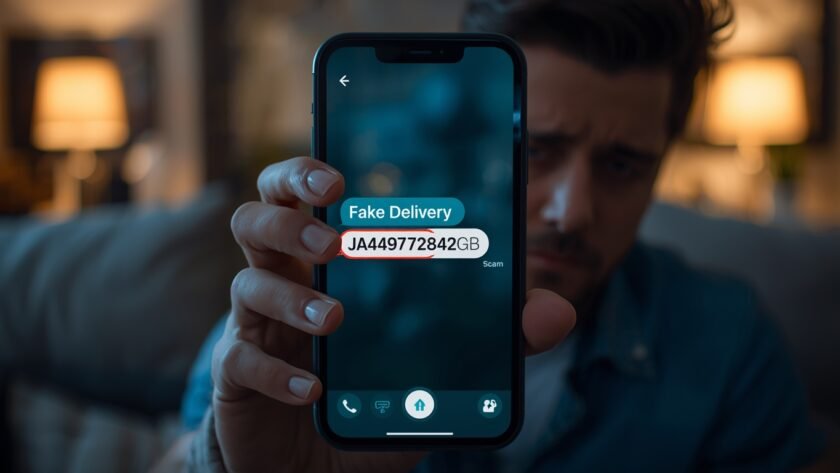Introduction
In the fast-paced world of online shopping, tracking numbers like JA449772842GB are essential for keeping an eye on parcel deliveries. However, this specific code has recently caught attention for all the wrong reasons. Many people have reported receiving messages containing this code, often tied to suspicious delivery notifications. Let’s take a closer look at what JA449772842GB really means, why it’s commonly linked with scams, and how you can protect yourself from falling victim to fraud.
Understanding JA449772842GB
At first glance, JA449772842GB appears to be a standard parcel tracking number. Its format resembles that of legitimate UK-based courier tracking codes — typically ending with “GB” to represent Great Britain. However, this code does not belong to any known delivery service database. When users try to track it through official postal or courier websites, it often shows no results found or invalid tracking number.
That’s because JA449772842GB isn’t connected to any real parcel. Instead, it’s often used as part of a scam operation, where fraudsters attempt to trick people into believing they have a pending delivery that requires payment or verification.
Why JA449772842GB Is Associated with Scams
Cybercriminals use tracking codes like JA449772842GB because they look authentic enough to deceive unsuspecting individuals. The scam usually unfolds through a message — either by email, SMS, or social media — claiming that a parcel is awaiting delivery or payment.
Here’s how it typically happens:
- You receive a message claiming a package is waiting for you, using JA449772842GB as the reference number.
- The message may say that your parcel cannot be delivered because of an unpaid fee or incomplete address.
- It includes a link urging you to “update delivery details” or “make a small payment.”
- Once you click, you’re redirected to a fake courier website that looks strikingly similar to legitimate postal services.
- The goal? To steal your personal information, credit card details, or even install malware on your device.
The realism of these scams is what makes them dangerous. The combination of a believable code and urgent wording convinces victims to act quickly — often before verifying the legitimacy of the message.
How to Identify a Fake Tracking Number Like JA449772842GB
Spotting a scam can be difficult, especially when criminals use real-world tactics and designs to deceive people. However, certain warning signs can help you recognize a fraudulent message instantly.
1. Unexpected Delivery Notifications
If you haven’t ordered anything recently but received a delivery message with JA449772842GB, it’s likely fake. Scammers often send random tracking codes hoping someone will take the bait.
2. Suspicious URLs or Links
Hover over the link in the message without clicking. If the URL doesn’t lead to an official courier domain (like Royal Mail, DHL, or Parcelforce), it’s a scam.
3. Requests for Payment
Legitimate postal services rarely ask for small “customs” or “redelivery” fees through text or email. If the message requests money, it’s almost certainly fraudulent.
4. Poor Grammar and Spelling
Fraudulent messages often contain grammatical errors, awkward phrasing, or misspelled company names — another clear sign that something isn’t right.
5. Invalid Tracking on Official Sites
When you enter JA449772842GB on an official tracking portal and it shows “number not found,” treat it as a red flag. Real parcels always show some movement or registration data.
How to Protect Yourself from JA449772842GB Scams
Avoiding scams linked to fake tracking numbers is easier than you think. Here are a few essential safety tips:
Verify Before Clicking
Never click a link in a message about a parcel unless you were expecting a delivery. Always go to the courier’s official website directly and manually enter the tracking number.
Don’t Share Personal Information
No legitimate courier will ever ask for personal details like bank account information, credit card numbers, or passwords via email or SMS.
Report the Scam
If you receive a suspicious message with JA449772842GB, report it to your local postal authority or cybercrime center. Forward phishing emails or texts to the appropriate reporting address in your country.
Keep Your Devices Secure
Install up-to-date antivirus software and ensure your operating system is regularly updated. This minimizes the risk of malware from malicious links.
Stay Informed
Familiarize yourself with common delivery and payment scams. Being aware of how these schemes work is the best defense against them.
What To Do If You’ve Already Clicked the Link
If you’ve already interacted with a message containing JA449772842GB, act quickly to minimize potential damage:
- Disconnect from the Internet – If malware has been downloaded, cut off network access to prevent further data theft.
- Scan Your Device – Run a full antivirus scan to detect and remove malicious files.
- Change Your Passwords – Update all login credentials, especially for online banking and email accounts.
- Monitor Your Accounts – Watch your bank and credit card statements for unauthorized transactions.
- Contact Your Bank – Inform your financial institution immediately if you entered any card details. They can freeze your card or monitor for fraudulent activity.
Why Scammers Use Tracking Numbers Like JA449772842GB
Scammers are strategic. They know people trust recognizable formats and official-looking numbers. By using something that appears authentic — like JA449772842GB — they build instant credibility. These codes create a sense of urgency and authority, prompting victims to act fast.
The psychological trick is simple: people fear losing packages, especially if they’ve been shopping online. Scammers exploit that fear to steal money and data.
Legitimate vs. Fake Tracking Numbers
| Feature | Legitimate Tracking Code | Fake Tracking Code |
|---|---|---|
| Source | Received after making a real purchase | Appears randomly in an unsolicited message |
| Tracking Result | Shows parcel progress on courier site | Returns “no result” or “invalid code” |
| Sender Information | Comes from official courier or retailer | Comes from unknown number or generic email |
| Payment Request | No unexpected payment required | Requests small “redelivery” or “customs” fee |
Final Thoughts
The tracking code JA449772842GB may look like a harmless delivery reference, but it’s actually one of many fake numbers used by scammers to trick people into revealing sensitive information or making fraudulent payments. Staying alert, verifying every delivery message, and never clicking suspicious links are your best defenses.
By understanding how scams like these operate, you can protect yourself and others from becoming victims. Always remember — if something feels off, it probably is.



